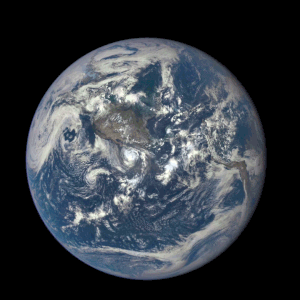
Back Natuurlike satelliet Afrikaans Satellit (Astronomie) ALS Satelite natural AN उपग्रह (खगोलीय पिंड) ANP قمر طبيعي Arabic ساطليت طبيعي ARY قمر طبيعى ARZ প্ৰাকৃতিক উপগ্ৰহ Assamese Satélite natural AST Təbii peyk Azerbaijani
This article needs additional citations for verification. (January 2024) |

A natural satellite is, in the most common usage, an astronomical body that orbits a planet, dwarf planet, or small Solar System body (or sometimes another natural satellite). Natural satellites are colloquially referred to as moons, a derivation from the Moon of Earth.
In the Solar System, there are six planetary satellite systems containing 288 known natural satellites altogether. Seven objects commonly considered dwarf planets by astronomers are also known to have natural satellites: Orcus, Pluto, Haumea, Quaoar, Makemake, Gonggong, and Eris.[1] As of January 2022, there are 447 other minor planets known to have natural satellites.[2]
A planet usually has at least around 10,000 times the mass of any natural satellites that orbit it, with a correspondingly much larger diameter.[3] The Earth–Moon system is a unique exception in the Solar System; at 3,474 kilometres (2,158 miles) across, the Moon is 0.273 times the diameter of Earth and about 1⁄80 of its mass.[4] The next largest ratios are the Neptune–Triton system at 0.055 (with a mass ratio of about 1 to 4790), the Saturn–Titan system at 0.044 (with the second mass ratio next to the Earth–Moon system, 1 to 4220), the Jupiter–Ganymede system at 0.038, and the Uranus–Titania system at 0.031. For the category of dwarf planets, Charon has the largest ratio, being 0.52 the diameter and 12.2% the mass of Pluto.
- ^ Cite error: The named reference
WGPSNwas invoked but never defined (see the help page). - ^ Cite error: The named reference
Johnstonwas invoked but never defined (see the help page). - ^ Cite error: The named reference
2006Natur.441..834Cwas invoked but never defined (see the help page). - ^ Cite error: The named reference
GuinnessWR2014was invoked but never defined (see the help page).